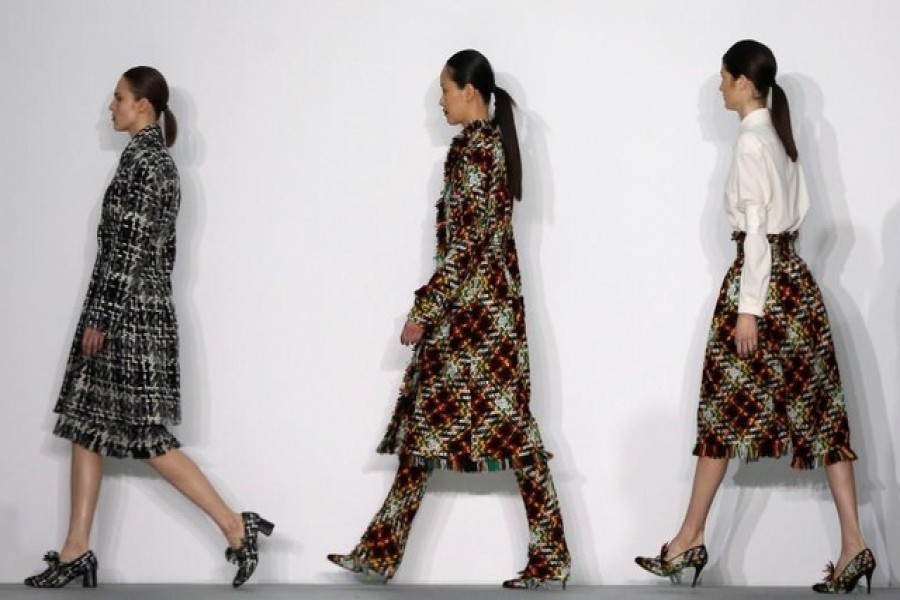
Published :
Updated :

A woman must deal with a glaring lack of pockets in their clothing alongside many other endless problems.
Recently, I have had to add one of my favourite and most overworn dresses to my mother’s collection of rags. In addition to its deep-sea theme, the dress gained favour amongst my limited wardrobes due to its functional pockets. I’ve worn it frequently and whenever someone commented on the block-printed jellyfish and blue whales, I would proudly sink my hands into my dress and inform them with a beam: “It has pockets!” And other girls would immediately exclaim, “Where did you get it?!”
For the opposite sex, this may seem to be a silly issue to discuss, fight over, or even write about; but they are content with their convenience and comfort and do not understand why a purse is different. They are privileged with spacious pockets on the front and back of their pants, as well as shirts, coats, suits, panjabi-pyjama and so on. A woman has to balance holding things like a smartphone, a purse, saree achal, kachchi and so on in one hand and working with another hand at a wedding, while a man is free from holding so many things in one hand to the least because they have pockets. If you asked a man to find something from your purse, he would likely fail and make jokes comparing your purse to black holes, clown cars and Mary Poppins’ bag.
How we got here
In 1905, Charlotte P. Gilman wrote for the New York Times, “One supremacy there is in men’s clothing, its adaptation to pockets. Women have from time to time carried bags, sometimes sewn in, sometimes tied on, sometimes brandished in the hand, but a bag is not a pocket.”
Had I known the creative genius, I would have liked to see her reaction to the later development of fake pockets for women’s pants.
Until the 17th century, Western fashion had pockets for everyone. These pockets were not always attached to their clothes but often carried like a pouch. If you have played any medieval game or watched a period piece, you would have noticed the characters tie pouches to their waists or don them on belts. But with the development of rurality and the number of pickpockets and thieves, these pouches found themselves concealed under men’s coats and women’s petticoats for security. They would hold napkins, drinks, and even writing materials since they had so much room.
But by the time the French revolution was over, fashions had changed from poofy, aristocratic ball gowns to slender skirts that accented the woman’s figure. Times were changing and it meant here was no more room for the hefty pouches to be hidden under the clothes, so the men had their pockets sewn in and the women opted for decorated purses to hold their necessary items. After all, the corporeal form is more important than comfort and convenience!
Fake pockets and why they exist
In April 1939, Vogue magazine stated in their monthly issue that women’s pants needed to be “well-cut and well-creased” in an attempt to justify their practice of making smaller pockets or decorative pockets for women. What would a woman need pockets for anyway? A woman with any shred of value in the world would surely be indoors. Pockets are for when you are out, to keep your proof of identity, wealth, and valuables. None of which, a woman is encouraged to keep nor carry.
World War II surprisingly brought about a slight change in the pocket trend for women, as more and more of them found work outside their homes. The need for accessibility increased, as did pockets in women’s clothing. However, this did not last long as the men came back soon and reclaimed their jobs as well as their fashion. Much to our dismay in 1954, Christian Dior put the final nail in the coffin: “Men have pockets to keep things in, women for decoration.”
In other words, let us not kill the market for purses. When the messiah speaks, you dare not disobey. It has been roughly 60 years since the infamous declaration, but the trend has yet to see any change. Fashion has not evolved for the needs or comfort of women. We are still wearing jeggings with pockets fit for coins (if you’ve been blessed with one) and worshipping the “thin ideal” and chasing a lean appearance. And why you would loosen up tight pants instead of selling luxury handbags at cutthroat prices, your over-friendly neighbourhood misogynist does not understand.
The lack of pockets in women’s clothing is indicative of systematic sexism and proof of how the capitalist society benefits from it. It is a prevailing problem for which women have been protesting for at least a hundred years, if not more. And pocket equality is not a fashion-centric problem, it is indicative of many subtle injustices inflicted upon women throughout generations.


 For all latest news, follow The Financial Express Google News channel.
For all latest news, follow The Financial Express Google News channel.